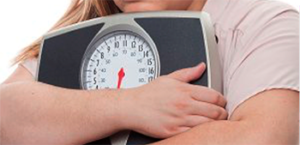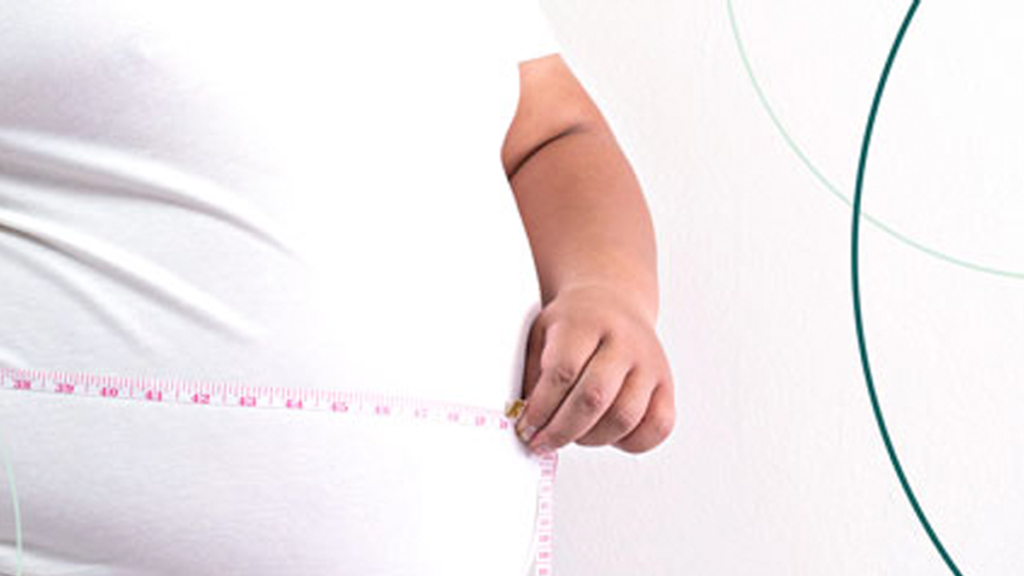
In 1836, Charles Dickens wrote a novel, The Pickwick Papers, in which a character named Joe presented many of the symptoms that were later linked by doctors to obesity and sleep apnea, which is diagnosed as not breathing for extended periods of time during sleep. As many doctors and scientists do, they took an established name to categorize medical conditions in order for people to understand them better, and thus came the name Pickwickian syndrome.
Nowadays, this syndrome is known as obesity hypoventilation syndrome (OHS, for short) and the former name has fallen into disuse in the medical community.
If you’ve never heard of this syndrome before, it’s because it often goes undiagnosed and “its prevalence is estimated to be 10-20% in obese patients with obstructive sleep apnea and 0.15-0.3% in the general adult population”[1].
Obesity can result in very serious and dangerous complications that can go unnoticed if you don’t receive the right treatment from your doctor. At LIMARP®, our team of doctors go over your medical history to identify if you have any underlying issues; if it’s not evident in the available information, they will order some tests to confirm any comorbidities. Dr. Liza María Pompa González leads a well-rounded medical team that will create a personalized treatment plan to address your specific condition and they will be with you every step on the way, whether you require surgery or not.
This article will focus on obesity hypoventilation syndrome, its causes, symptoms, how it’s diagnosed, and how it can be treated.
The content is for informative purposes only and if you present any of the symptoms listed here, we recommend you speak to your doctor immediately and avoid any self diagnosis.
Obesity hypoventilation syndrome, also known as Pinwickian syndrome, is a breathing disorder that affects some people who have been diagnosed with obesity and can cause long-term changes in the body’s health. People with this condition fail to breathe rapidly or deeply enough, resulting in low oxygen levels and high blood carbon dioxide levels[2]. The disease puts excessive strain on the heart, which may lead to cardiac failure and leg swelling, and if untreated, it can even cause life-threatening health problems.
But, what does hypoventilation mean?
Hypoventilation means a person is not moving enough air in and out of your lungs[3]. Someone with normal breathing patterns exhales carbon dioxide, which is a product of the food their body digests for energy. If you have obesity hypoventilation syndrome, you will have too much carbon dioxide and too little oxygen in your blood.
While people with obesity are more likely to develop OHS, its cause it’s not always clear. It may be a combination of your brain being unable “to correctly manage your breathing or excess fat producing hormones that cause you to breathe ineffectively”, and if you are obese, it may develop because the fat on your body, especially in the neck, chest, or across your abdomen, can make it difficult to breathe deeply.
Breathing difficulties is a common sign of obesity, so what should you look out for to differentiate this from obesity hypoventilation syndrome? OHS can have effects on your body while you’re awake and asleep. While you sleep, your breathing can become shallow and even stop for minutes or longer. Other common symptoms may include:
- Feeling out of breath
- Lack of energy
- Sleepiness or fatigue throughout the day
- Cyanosis, which is swelling or developing a blue hue on your limbs
- Headaches as a result of excess carbon dioxide
- Depression
It may be difficult to notice some of these symptoms when you’re asleep, so a loved one may be the best to notice if you often snore loudly, choke or gasp, or have trouble breathing at night. Other, more serious symptoms of obesity hypoventilation syndrome include obstructive sleep apnea, where go stop breathing while you sleep; high blood pressure or hypertension, which can lead to other health-threatening problems, and cor pulmonale, which is an “alteration in the structure, like hypertrophy or dilatation, and function of the right ventricle of the heart caused by a primary disorder of the respiratory system resulting in pulmonary hypertension”[4].
Now that we have recognized some of the symptoms, we’d like to present some of the ways this syndrome can be diagnosed. Our medical team at LIMARP® will first order some tests and through examination will analyze not only your symptoms, but your sleeping habits, BMI, and oxygen and carbon dioxide levels. Additional tests may include taking blood samples from the artery on your wrist; chest x-rays and pulmonary function tests, and in some cases, your doctor may order a polysomnography. A polysomnography is a sleep study that can be used to test levels of positive airway pressure therapy to treat sleep apnea and hypoventilation during sleep.
If your tests come back positive and you are diagnosed with hypoventilation syndrome, don’t despair! There are several ways to treat it and your doctor at LIMARP® will create a specialized plan that meets your needs. As part of our integrative treatment program, we offer different services to ensure, such as clinical intervention and guidance in areas like nutrition, mental health, and fitness.
Our Integrative Program is tailored to each patient, according to their body mass index, their weight loss goals, expectations and needs. Depending on the patient’s profile, there are multiple surgical or non-invasive weight loss options to help them begin to transform their bodies, health and lives. Our program has been proven effective, not only because we excel at our clinical interventions, but also because we provide a long-term follow-up where we make sure our patients obtain the long-lasting results expected from their treatment.
When it comes to obesity hypoventilation syndrome, a change of lifestyle may be enough to treat it. Our non-invasive treatment options include a customized and monitored diet and exercise plan. You will meet with our experts to develop your personal nutrition plan and physical activity routine to start you off on your weight loss journey. This plan can also include steps to improve your sleeping patterns, which have been shown to change when the patient starts a physical activity regime and follows a balanced diet composed of whole foods.
You may also need a continuous positive airway pressure (CPAP) machine or other breathing device at night to help keep your airways open and increase blood oxygen levels. CPAP is well-researched and effective in reducing sleep apnea and improving quality of sleep[5]. It’s important that you follow your doctor’s instructions when it comes to using this machine so that your symptoms don’t worsen overtime.
If you’re not seeing results from these previous treatments, your doctor may recommend a tracheostomy, which is a procedure where your doctor cuts a hole open in your trachea, or windpipe, and inserts a tube to allow consistent breathing. Other invasive interventions may include bariatric surgery, like the gastric bypass or laparoscopic adjustable gastric banding. These surgeries limit the amount of food that your stomach can hold and can help you lose the weight that is preventing you from breathing properly.
However, as we’ve mentioned before, not all cases are the same and surgery may not be the best option for you. Only your doctor will be able to determine the treatment that will help you overcome the ailments that come with obesity hypoventilation syndrome and they will go over all the information with you so that you learn more about OHS and what your body is about to go through.
If you’re already dealing with obesity but haven’t been diagnosed with obesity hypoventilation syndrome, there are several ways you can prevent it from developing. These preventive steps will also help you decrease your risk of other obesity-related issues and ensure that you start leading a healthy lifestyle.
So, what can you do to prevent this syndrome?
First, take a look at your day to day: the food you eat, the time you dedicate to moving your body, and how well you follow any instruction your doctor has given you to treat your obesity. Is there something you can change or improve? Keep in mind that it’s recommended that we exercise at least 30 minutes a day and that to see results you should complement this activity with a healthy diet.
If you have any physical impediment that prevents you from doing physical activity, talk to your doctor to see which alternatives are available to you. Our goal is to prevent you from developing more serious diseases due to obesity hypoventilation syndrome, so if you have any more questions or are in need of assistance, contact your doctor as soon as possible.
Contact Us to Learn More
If you want more information on this topic or are experiencing any symptoms related to obesity hypoventilation syndrome, schedule an appointment with one of our doctors. We can help determine the right treatment for you. Contact us online anytime or give us a call at (619) 373-0229.
References
[1] Chau EH, Lam D, Wong J, Mokhlesi B, Chung F. Obesity hypoventilation syndrome: a review of epidemiology, pathophysiology, and perioperative considerations. Anesthesiology. 2012 Jul;117(1):188-205. doi: 10.1097/ALN.0b013e31825add60. PMID: 22614131.
[2] “Obesity Hypoventilation Syndrome”. https://www.nhlbi.nih.gov/health/obesity-hypoventilation-syndrome. (Accessed July 31, 2022).
[3] “Obesity Hypoventilation Syndrome”. https://www.thoracic.org/patients/patient-resources/resources/obesity-hypoventilation-syndrome.pdf. (Accessed July 31, 2022).
[4] Garrison DM, Pendela VS, Memon J. Cor Pulmonale. [Updated 2021 Aug 11]. In: StatPearls [Internet]. Treasure Island (FL): StatPearls Publishing; 2022 Jan-. Available from: https://www.ncbi.nlm.nih.gov/books/NBK430739/.
[5] Romero-Corral A, Caples SM, Lopez-Jimenez F, Somers VK. Interactions between obesity and obstructive sleep apnea: implications for treatment. Chest. 2010 Mar;137(3):711-9. doi: 10.1378/chest.09-0360. PMID: 20202954; PMCID: PMC3021364.


